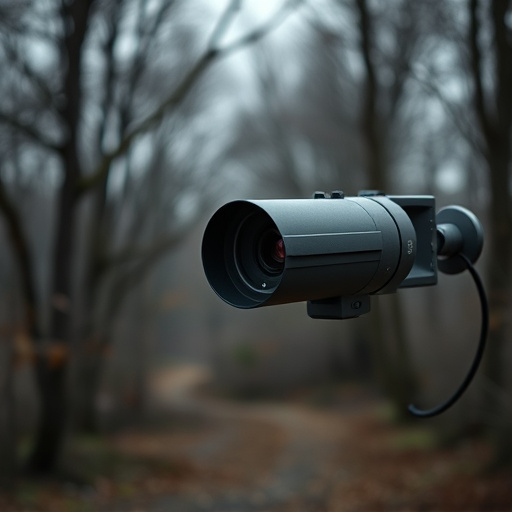Wireless hidden cameras for apartments offer advanced security with discreet designs mimic everyday objects and remote control via smartphone apps. Place them in unobstructed areas, using items like smoke detectors or thermostats to maintain covertness. Evolving technologies, including heat signature, magnetic field, electrical signal, and AI-powered detection methods, aid in privacy protection. Legal and ethical considerations regarding individual privacy require exploring alternative security measures while balancing safety needs.
In the era of advanced technology, covert recording equipment has become a prevalent concern, especially in residential settings like apartments. This article explores the intricate world of wireless hidden cameras tailored for apartment complexes, delving into strategic placement spots and cutting-edge detection methods. We’ll uncover the legal landscape surrounding these devices while addressing critical privacy issues. Understanding these aspects is crucial for both property managers aiming to enhance security and residents seeking peace of mind in their homes.
- Understanding Wireless Hidden Cameras for Apartments
- Identifying Potential Placement Spots for Covert Equipment
- Detection Methods and Technologies
- Legal Considerations and Privacy Concerns
Understanding Wireless Hidden Cameras for Apartments
Wireless hidden cameras for apartments have become increasingly sophisticated, offering tenants and property managers enhanced security and surveillance options. These devices are designed to blend seamlessly into the environment, often mimicking everyday objects like light switches or power outlets. They provide a level of discretion that was previously unattainable with traditional camera systems.
With the rise in digital connectivity, wireless hidden cameras can be controlled remotely via smartphone apps, allowing users to monitor their apartments from anywhere at any time. This real-time access is particularly appealing for tenants who want peace of mind while away from home or for property managers aiming to maintain a secure and well-maintained living space. Moreover, these cameras often include advanced features such as motion detection, night vision, and two-way audio, further enhancing their functionality and effectiveness in apartment settings.
Identifying Potential Placement Spots for Covert Equipment
When considering placement for covert recording equipment, such as wireless hidden cameras for apartments, it’s crucial to think like a spy. Discreetness is key; the goal is to capture footage without raising suspicion. Look for areas that offer clear line-of-sight and adequate coverage of spaces you wish to monitor. Common spots include corners of rooms, behind furniture or decorations, or within electrical outlets and light fixtures.
In apartments, empty wall spaces near windows or doors can be ideal for mounting cameras due to natural lighting and potential blind spots they create. Additionally, consider devices that blend in with the environment, like fake smoke detectors or thermostats, offering a virtually invisible solution. Remember, the goal is to avoid drawing attention while capturing high-quality footage.
Detection Methods and Technologies
Detection methods and technologies have evolved significantly with advancements in computer vision and artificial intelligence (AI). One common approach is to employ specialized equipment that can detect heat signatures, magnetic fields, or unusual electrical signals, which are often associated with hidden cameras. These devices can be particularly effective in identifying wireless hidden cameras for apartments, as they don’t rely on visual detection alone.
Another powerful tool is the use of thermal imaging technology, which captures and analyzes temperature variations. Wireless hidden cameras emit heat differently from their surroundings, and thermal imaging cameras can detect these subtle changes, revealing their presence. Additionally, AI-powered software can analyze video feeds in real time, detecting patterns and anomalies that might indicate the operation of covert recording equipment. These advanced technologies are becoming increasingly accessible, empowering individuals to protect their privacy in an era where surveillance is more sophisticated than ever.
Legal Considerations and Privacy Concerns
When it comes to covert recording equipment placement, legal considerations and privacy concerns are paramount. The use of wireless hidden cameras for apartments or any enclosed spaces must adhere to strict regulations aimed at protecting individual privacy. In many jurisdictions, setting up such surveillance devices without explicit consent from all parties involved is illegal. Landlords and property managers should be particularly cautious, as they have a fiduciary duty to respect the privacy of their tenants.
Privacy concerns extend beyond legal boundaries; ethical implications also come into play. Covert recording can erode trust between residents and management, leading to feelings of insecurity and distrust within the community. It’s crucial to explore alternative security measures, such as accessible surveillance systems or enhanced lighting, that balance safety needs with respect for personal privacy, especially when it comes to wireless hidden cameras for apartments.
In the context of covert recording equipment, especially wireless hidden cameras for apartments, understanding placement spots, employing advanced detection methods, and being aware of legal boundaries are paramount. By staying informed about emerging technologies and adhering to privacy regulations, residents can ensure their living spaces remain secure while preserving individual freedoms. The balanced use of these tools is a key aspect of modern apartment security.
